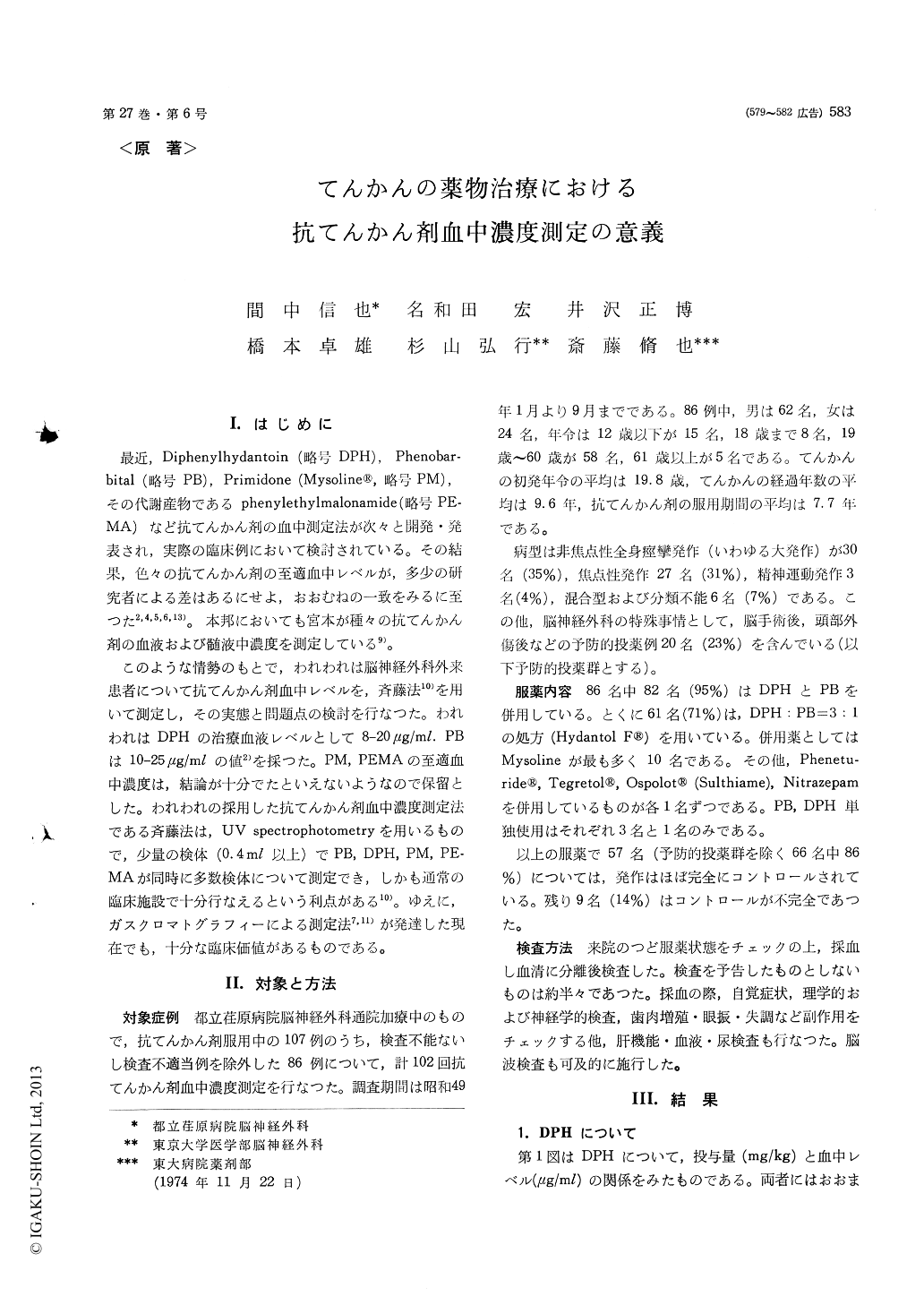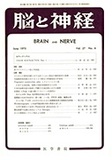Japanese
English
- 有料閲覧
- Abstract 文献概要
- 1ページ目 Look Inside
I.はじめに
最近,Diphenylhydantoin (略号DPH),Phenobar—bital (略号PB),Primidone (MysolineR,略号PM),その代謝産物であるphenylethylmalonamide (略号PE—MA)など抗てんかん剤の血中測定法が次々と開発・発表され,実際の臨床例において検討されている。その結果,色々の抗てんかん剤の至適血中レベルが,多少の研究者による差はあるにせよ,おおむねの一致をみるに至つた2,4,5,6,13)。本邦においても宮本が種々の抗てんかん剤の血液および髄液中濃度を測定している9)。
このような情勢のもとで,われわれは脳神経外科外来患者について抗てんかん剤血中レベルを,斉藤法10)を用いて測定し,その実態と問題点の検討を行なつた。われわれはDPHの治療血液レベルとして8-20μg/ml.PBは10-25μg/mlの値2)を採つた。PM,PEMAの至適血中濃度は,結論が十分でたといえないようなので保留とした。われわれの採用した抗てんかん剤血中濃度測定法である斉藤法は,UV spectrophotometryを用いるもので,少量の検体(0.4ml以上)でPB,DPH,PM,PE—MAが同時に多数検体について測定でき,しかも通常の臨床施設で十分行なえるという利点がある10)。ゆえに,ガスクロマトグラフィーによる測定法7,11)が発達した現在でも,十分な臨床価値があるものである。
The blood levels of Diphenylhydantoin (DPH), Phenobarbital (PB) and PB derivered from Primidone (PM) were measured by UV spectrophotometry (Saitoh's method) on 86 out-patients of our neuro-surgical clinic. They are recieving DPH, PB and PM. The most of them are prescrived both DPH and PB at a rate of 3 : 1. The standard dose ofour clinic is following ; DPH and PB are given 225-300 mg/day and 75-100 mg/day respectively in adults, and 125-225 mg/day and 50-75 mg/day in children.
It was found that the blood levels of DPH and PB have so large individual varietions that the dose in mg/kg might produse not optimal blood level, namely 8-20μg/ml in DPH and 10-25μg/ml in PB (Fig. 1 and 2). The blood levels of either DPH or PB in combined use of those drugs on well-controlled epileptic group were shown maintained at optimal range, but in many cases PB is over the minimum effective blood level, whereas DPH is under that level. Fixed rate of dose of DPH to PB is not advisable because of variety in blood levels of DPH. The rate of DPH to PB must be adjusted individually by blood level monitering.
Blood level monitering is of value especially in patients with refractory seizure and those with side effect like signs and symptomes, and in manage-ment of epilepsy as a guide to pertinense of anti-convulsant therapy.

Copyright © 1975, Igaku-Shoin Ltd. All rights reserved.


